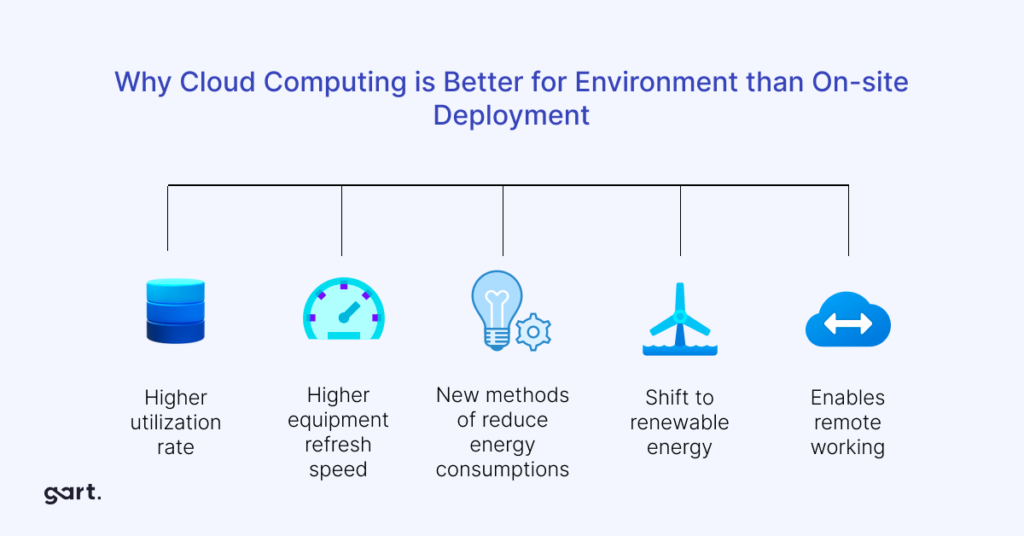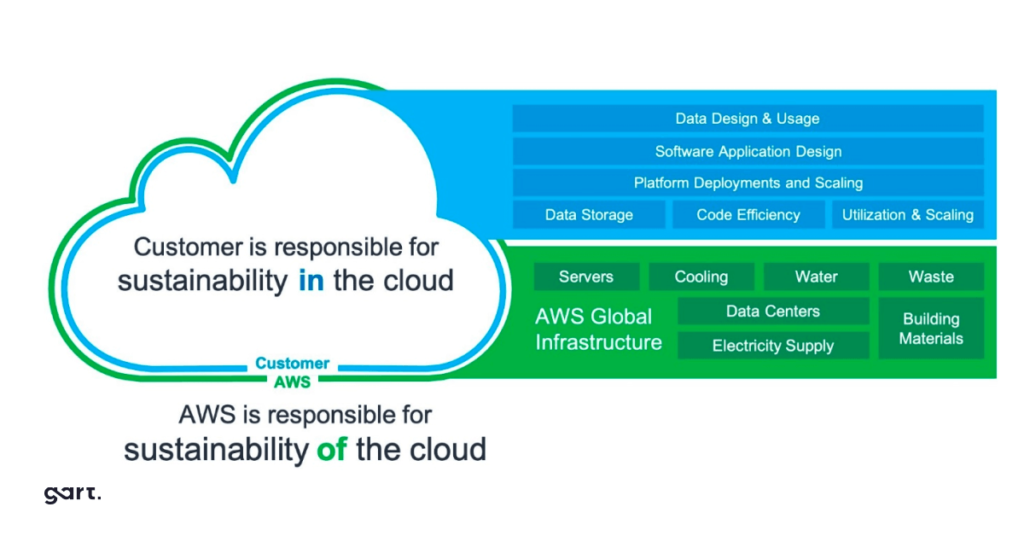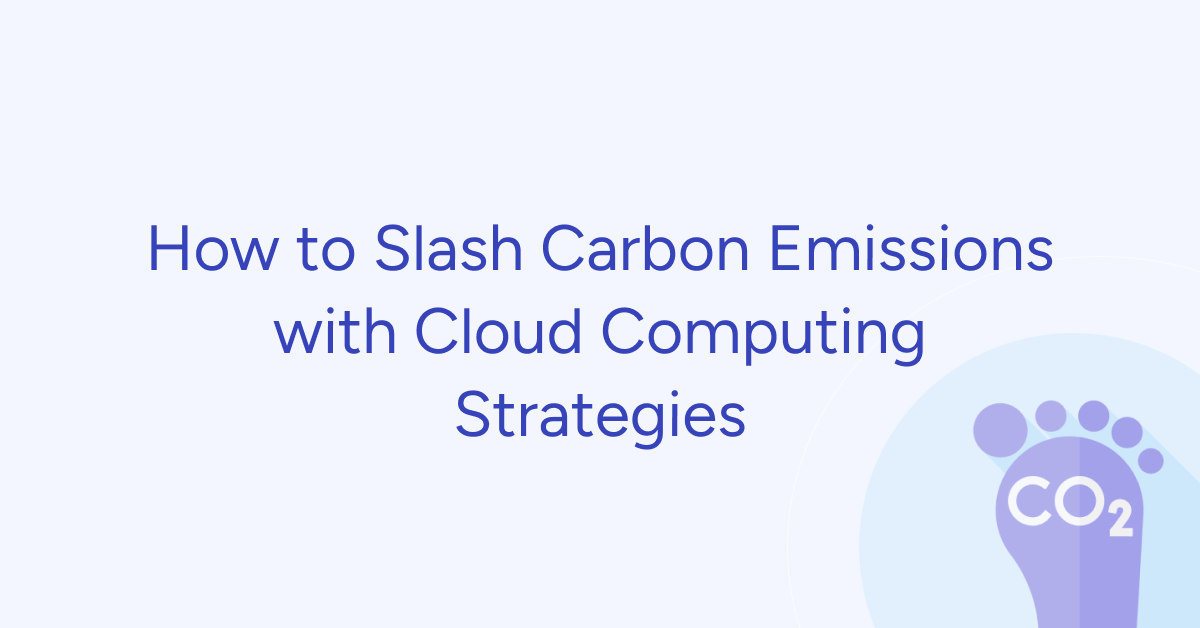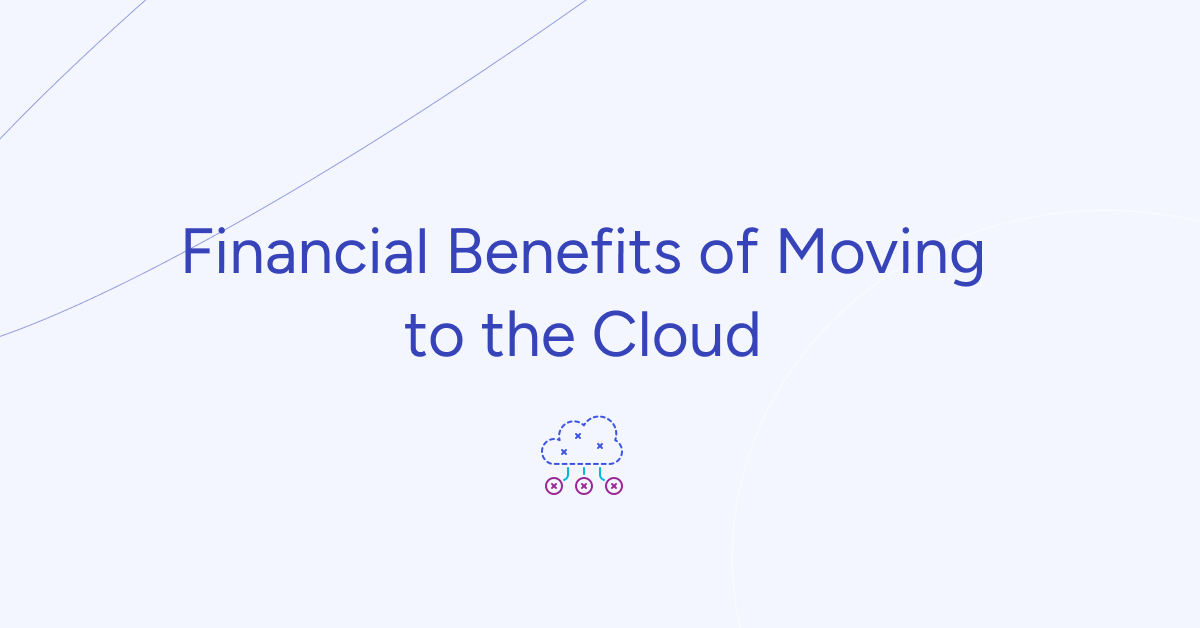If you’re thinking about moving your operations to the public cloud, you probably know about the benefits like improved agility, better performance, and lower costs. But there’s one more important factor to think about: being eco-friendly.
When we look at how much energy global data centers use, it’s almost as much as Spain uses in a whole year. Moving towards a green cloud model could make a big difference by reducing global CO2 emissions. This shift could cut total IT emissions by 5.9%, which is like taking 22 million cars off the road.
Why it Matters for Businesses
Carbon footprint refers to the total amount of greenhouse gases, specifically carbon dioxide (CO2) and other carbon compounds, that are released into the atmosphere as a result of human activities. This measurement is usually expressed in equivalent tons of CO2 emitted.
In July 2023, we experienced one of the hottest months in about 120,000 years. This highlights the pressing need to tackle climate change. As consumer habits change in response to these challenges, the demand for eco-friendly products and services is skyrocketing.
The tech industry is heading towards cutting ties with data centers powered by fossil fuels. To stay ahead in the market and maintain the trust of customers and investors, companies must act now to reduce their environmental impact. This can involve making smart choices about their cloud provider or even making significant changes themselves.
The good news is that major cloud providers not only offer solutions for your immediate needs but can also be a great starting point for your journey toward sustainable software development.
Embracing cloud solutions boosts sustainability and brings notable cost savings to organizations. Cloud providers offer scalable and pay-as-you-go models, enabling businesses to optimize resource use and cut operational costs.

The Environmental Impact of Cloud Computing
Energy Consumption and Carbon Emissions
Traditional cloud data centers, composed of extensive server farms, consume vast amounts of electricity. These centers often rely on fossil fuels, exacerbating greenhouse gas emissions. Reports suggest that the energy used by data centers worldwide accounts for approximately 1% of global electricity consumption, with this figure expected to rise.
- Cooling Systems: A significant portion of energy usage in these data centers is attributed to cooling systems, which regulate server temperatures.
- Carbon Footprint: The reliance on non-renewable energy sources amplifies the environmental toll, contributing significantly to climate change.
Resource Depletion and E-Waste
Beyond energy concerns, the manufacturing and decommissioning of hardware lead to resource depletion and electronic waste (e-waste). An estimated 50 million tons of e-waste are generated globally each year, highlighting the urgency for sustainable lifecycle management of cloud infrastructure.
Water Usage
Data centers also consume substantial amounts of water for cooling, which places stress on local water resources, further exacerbating their environmental footprint.
Why Cloud is More Affordable
Cloud computing transforms the landscape of IT services, moving away from traditional desktop setups to remote data centers. Users can effortlessly access on-demand infrastructure, eliminating the need for on-site installation and maintenance.
Green cloud computing takes this concept a step further by utilizing renewable energy sources, reducing energy consumption, and making a significant dent in the carbon footprint.
Virtualization and containerization, dividing hardware for deploying multiple operating systems, help reduce server needs and energy consumption. AI-based resource scheduling, guided by historical usage data, conserves energy. Infrastructure as a Service (IaaS) optimization, focusing on virtual machines and containers, contributes to eco-conscious IT.
A notable 2020 study revealed an interesting trend: despite a 550% increase in computing output, data center energy consumption only grew by 6%. This underscores the efficiency achieved through sustainable practices in cloud computing.
Ready to embrace the benefits of cloud migration? Contact Gart today, and let us guide you through a seamless transition to the cloud. The time is now to elevate your operations and embrace the future of digital efficiency.
Strategies for Sustainable Cloud Computing
Advanced Cooling Technologies
Innovations such as liquid cooling and precision air conditioning can significantly reduce the energy consumption associated with traditional cooling methods.
Server Virtualization
By enabling multiple virtual servers to run on a single physical machine, server virtualization minimizes hardware requirements, leading to lower energy consumption.
Renewable Energy Integration
Adopting renewable energy sources like solar, wind, and hydropower can dramatically cut down carbon emissions. Companies such as Google and Microsoft have committed to sourcing 100% renewable energy for their data centers, setting a precedent for others in the industry.
Dynamic Resource Allocation
Dynamic resource allocation ensures optimal server utilization by redistributing workloads based on real-time demand, reducing idle energy consumption.
A Closer Look at Each Cloud
In a world where the demand for environmentally-friendly businesses is growing, it’s essential to be wary of greenwashing—superficial claims without real actions. When seeking vendors, prioritize those who openly share their sustainability efforts and show tangible results. Analyzing these details safeguards against false promises and ensures genuine steps toward a greener future receive support.
Top cloud service providers—Google, Amazon, and Microsoft—are actively committed to becoming carbon-neutral and transitioning their data centers to fully sustainable hosting by 2030.
The efficiency of public cloud infrastructure surpasses that of on-premises data centers, with a strong focus on adopting green energy sources.
- AWS aims for 100% renewable energy by 2025 and net-zero emissions by 2040.
- Azure plans to use 100% renewable energy by 2025 and strives to be carbon negative by 2030.
- GCP is set to rely on 100% carbon-free energy by 2030.
Choosing these providers aligns with the pursuit of a sustainable and eco-friendly digital landscape.
Don’t miss the opportunity to transform your operations. Contact Gart now, and let’s initiate your seamless transition to the cloud—where innovation meets sustainability.
Google: Carbon-Free Operations, Water Conservation, and Cloud Sustainability
Google aims to power all its global operations with 100% carbon-free energy around the clock by 2030. They achieved carbon-neutrality in 2007 and have been using renewable energy for their data centers since 2017.
The company invests in technology for carbon removal solutions to offset its emissions. Google also has a goal to replenish 120% of the water consumed in its data centers and facilities.
Public cloud services, like Google’s, rely on energy-efficient hyperscale data centers. These centers outperform smaller servers thanks to innovative infrastructure design and advanced cooling tech. Operating in a Google data center reduces electricity needs for IT hardware, leading to higher power usage effectiveness (PUE) compared to typical enterprise data centers.
Google Cloud not only prioritizes sustainability in its operations but also offers the Carbon Footprint tool for customers. This tool allows users to monitor and measure carbon emissions from their cloud applications, covering Scope 1, 2, and 3. It serves as an emissions calculator, aiding companies in reporting their gross carbon footprint and offering best practices for building low-carbon applications in Google Cloud.
Read more: Google Cloud Migration Services
Microsoft: Pioneering Carbon Reduction, Circular Solutions, and Cloud Sustainability
Microsoft aims to cut carbon emissions by over 50% by 2030 and eliminate its historical carbon footprint by 2050. They’re shifting to 100% renewable energy for data centers and buildings by 2025, and zero waste is on the agenda by 2030.

Circular Centers repurpose old servers to combat growing e-waste, introduced as part of Microsoft’s sustainability strategy since 2020.
Tools like Microsoft Cloud for Sustainability offer real-time insights into carbon emissions, while the Emissions Impact Dashboard for Microsoft 365 calculates cloud workload footprints.
Microsoft’s focus areas include lowering energy consumption, green data centers, water management, and waste reduction through responsible sourcing and recycling.
Four key drivers reduce the energy and carbon footprint of the Microsoft Cloud: IT operational efficiency, equipment efficiency, datacenter infrastructure efficiency, and new renewable electricity, targeting 100% by 2025.
Read more: Azure Migration Services
Amazon: Leading the Charge with Net-Zero Commitment and Sustainable Solutions
As a co-founder of The Climate Pledge, Amazon joins 400 global companies committed to achieving net-zero carbon emissions by 2040. Their strategies include reducing material usage, innovating for energy efficiency, and embracing renewable energy solutions.

Amazon, the largest corporate buyer of renewable energy since 2020, leads in sustainable practices to decarbonize its transportation network.
A study by 451 Research found that US enterprises, on average, could cut their carbon footprint by up to 88% by moving to AWS from on-premises data centers.
Amazon introduces the AWS Customer Carbon Footprint Tool, an emissions calculator for customers. It provides data on carbon footprint, including Scope 1 and Scope 2 emissions from cloud service usage. It also estimates the carbon emission reduction achieved by transitioning operations to the cloud.
Read more: AWS Migration Services
Conceptual Frameworks for Green Clouds
There are several frameworks that provide a structured roadmap for sustainable cloud computing:
- Ecological Modernization Theory
- Triple Bottom Line (TBL)
- Life Cycle Assessment (LCA)
Ecological Modernization Theory
Ecological Modernization Theory (EMT) emphasizes that technological advancement, rather than being a threat to the environment, can align with ecological objectives. The framework promotes leveraging innovation to minimize environmental impact while maintaining or enhancing efficiency.
In cloud infrastructures, this theory supports the integration of eco-friendly practices such as:
- Adoption of energy-efficient hardware.
- Investment in advanced cooling systems.
- Use of renewable energy sources for powering data centers.
Cloud service providers can modernize their operations to reduce energy consumption and carbon footprints while maintaining service quality and scalability.
Triple Bottom Line (TBL)
The TBL framework evaluates sustainability across three dimensions: economic, social, and environmental. In the context of cloud computing, it offers a balanced perspective to achieve sustainability goals:
- Economic Dimension: Ensures the financial viability of sustainable practices, such as reducing operational costs through energy-efficient technologies.
- Social Dimension: Encourages corporate social responsibility by promoting awareness and equitable practices in communities where data centers operate.
- Environmental Dimension: Prioritizes minimizing the ecological footprint through renewable energy integration, efficient resource usage, and e-waste management.
The TBL approach promotes a holistic view, ensuring that economic growth in the cloud industry does not come at the expense of environmental or social well-being.
Life Cycle Assessment (LCA)
LCA examines the environmental impact of cloud computing across its entire lifecycle, from raw material extraction to disposal. This detailed analysis helps identify the stages where intervention is most needed:
Stages in LCA:
- Raw Material Extraction: Assessing the environmental costs of producing hardware components.
- Manufacturing: Evaluating emissions and resource use during production.
- Deployment and Operation: Measuring energy and water consumption during active use.
- End-of-Life Management: Analyzing the ecological impact of decommissioning and recycling infrastructure components.
By understanding these stages, cloud providers can implement targeted strategies to mitigate the environmental impact, such as sourcing sustainable materials and adopting energy-efficient operations.
Empower Your Green Transition
Ready to take the leap into the public cloud? Before you dive in, a word of advice: Cloud migration is more than a simple “lift and shift.” It requires a strategic approach, choosing the right vendor, ensuring infrastructure readiness, and aligning IT and business objectives.
However, the investment in this transition pays off. Shifting operations to the public cloud and prioritizing cloud-based applications can potentially reduce global emissions and energy consumption by up to 20 percent.
Feeling inspired to make a positive impact? Now’s the time to act. Contact Gart, and we’ll guide you through the migration process. Let’s contribute to a greener future together!
See how we can help to overcome your challenges









